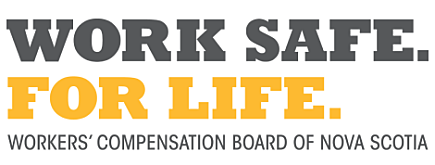Workplace injury took less of a toll on the Nova Scotians who work in our long-term care and home care sectors in summer 2022, according to WCB Nova Scotia’s Report to the Community, released today for the third quarter.
Nearly seven out of every 100 covered home care workers and four out of every 100 covered long-term care workers sustained a time-loss injury on the job in Q3, but both the injury frequency and the time it takes for them to return to work after injury continue to decline.
The Q3 results are the latest example of long-term progress for the sectors. Compared to 9.64 in 2017, the time-loss injury rate for home care was 6.86 per 100 covered workers. For long-term care, the injury rate sits at 4.23 per 100 covered workers, down from 5.33 in 2017.
While the rate of injury is still high compared to the overall injury rate for the province at 1.54, Shelley Rowan, Interim CEO for WCB Nova Scotia, says the numbers are trending in the right direction and expects to see continued progress in year-end results.
“We are beginning to see the results of years of work by many partners, and the impact of the recent investments in safety for these critical workforces within the health care system,” says Rowan. “These are early and promising signs of progress. These workforces are critical, and we all need to continue to do all we can to support Nova Scotians in these sectors.”
The WCB continues to work with the provincial government, AWARE-NS and other industry partners to implement a range of workplace safety initiatives for Nova Scotia’s long-term care, home care and disability support sectors. For example, in 2022, this included the development and delivery of safe handling and mobility training, stay-at-work and return-to-work program support, and investments in a home care lift program.
“Working in long-term care and home care is demanding. As a government, we recognize this,” says Barbara Adams, Minister of Seniors and Long-Term Care. “We are committed to supporting the dedicated people who work in these sectors and to doing all we can to protect their health and safety. I am pleased to see the improvement in injury rates in these sectors. It shows workplace safety investments are having a positive impact.”
Helping these sectors continue to make improvements remains a priority for the WCB and its partners.
As a province, the overall time-loss injury rate remains relatively low at 1.54 per 100 covered workers, even as COVID-19 claims continue to add pressure to the system. The WCB also continues to see improvement in the number of working days lost to injury, recording an average of 296 days per 100 covered workers in Q3, down from 317 at the end of 2021.
Q3 and Operational Highlights
- In Q3 2022, the time-loss injury rate for home care was 6.86 per 100 covered workers, down from 7.43 at the end of 2021. In long-term care the rate was 4.23 per 100 covered workers, down from 4.85.
- At the end of Q3 2022, 1.54 out of every 100 Nova Scotians covered by the WCB lost time from work due to a workplace injury. The time-loss injury rate was 1.58 at the end of 2021, and 1.54 at the end of 2020.
- The average number of days paid for time loss has decreased to 296 per 100 covered workers, down from 317 from at the end of 2021. A new ad campaign from WCB Nova Scotia, which features a long-term care worker, is part of the organization’s ongoing work to improve workplace injury outcomes in the province.
- Financially, WCB Nova Scotia continues to feel the impacts of the ongoing volatility in investment markets, with the funded percentage at 90.6% at the end of Q3. Despite global economic challenges, the organization’s five-year rate of return on investment remains ahead of the benchmark.
Quarterly figures may fluctuate when calculations for year-end measures are finalized.*
For more operational updates and highlights from Q3, read the full Report to the Community online. To receive an email notification when new reports are available, sign up for our mailing list.
Source: WCB.NS.CA

